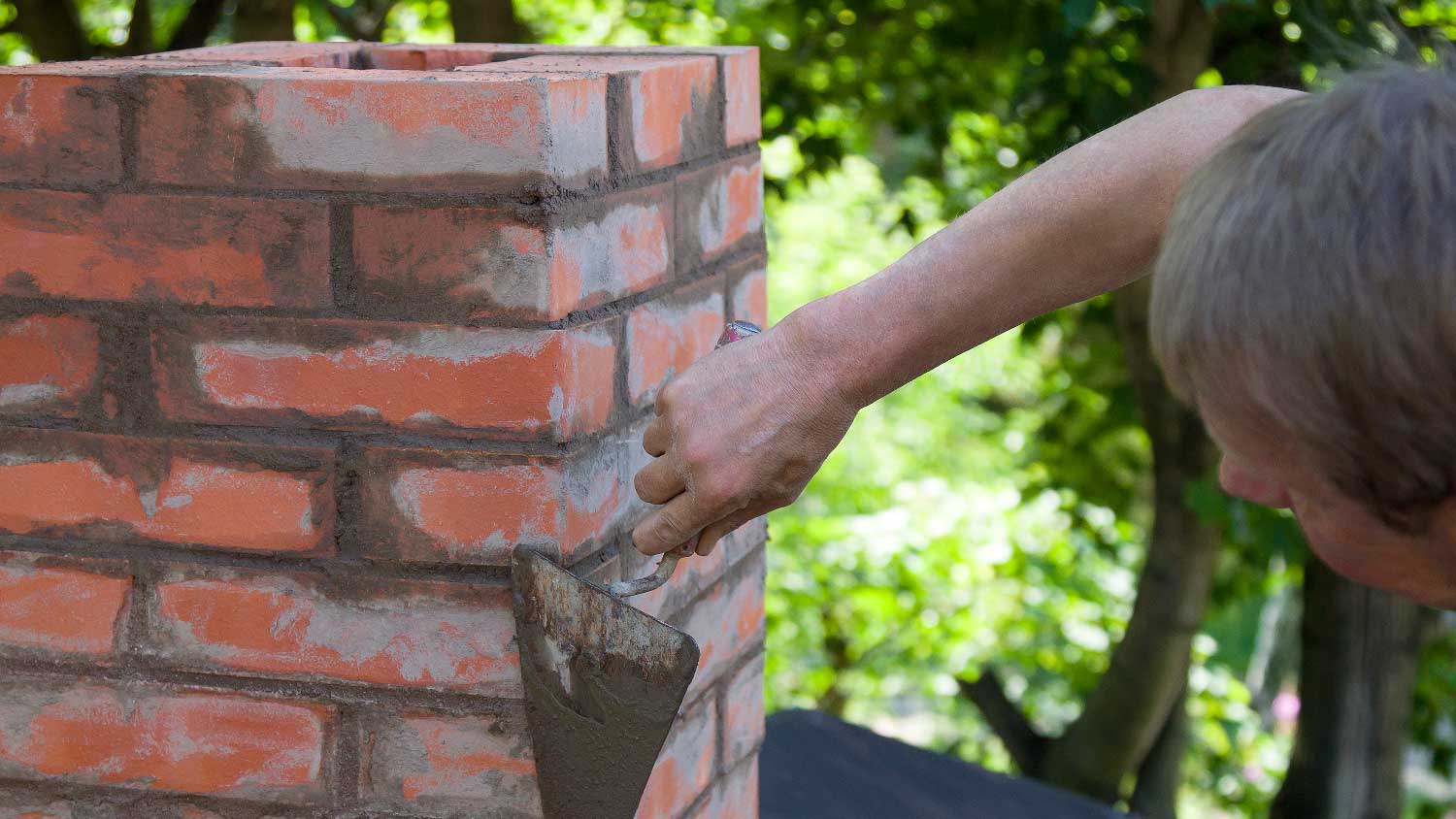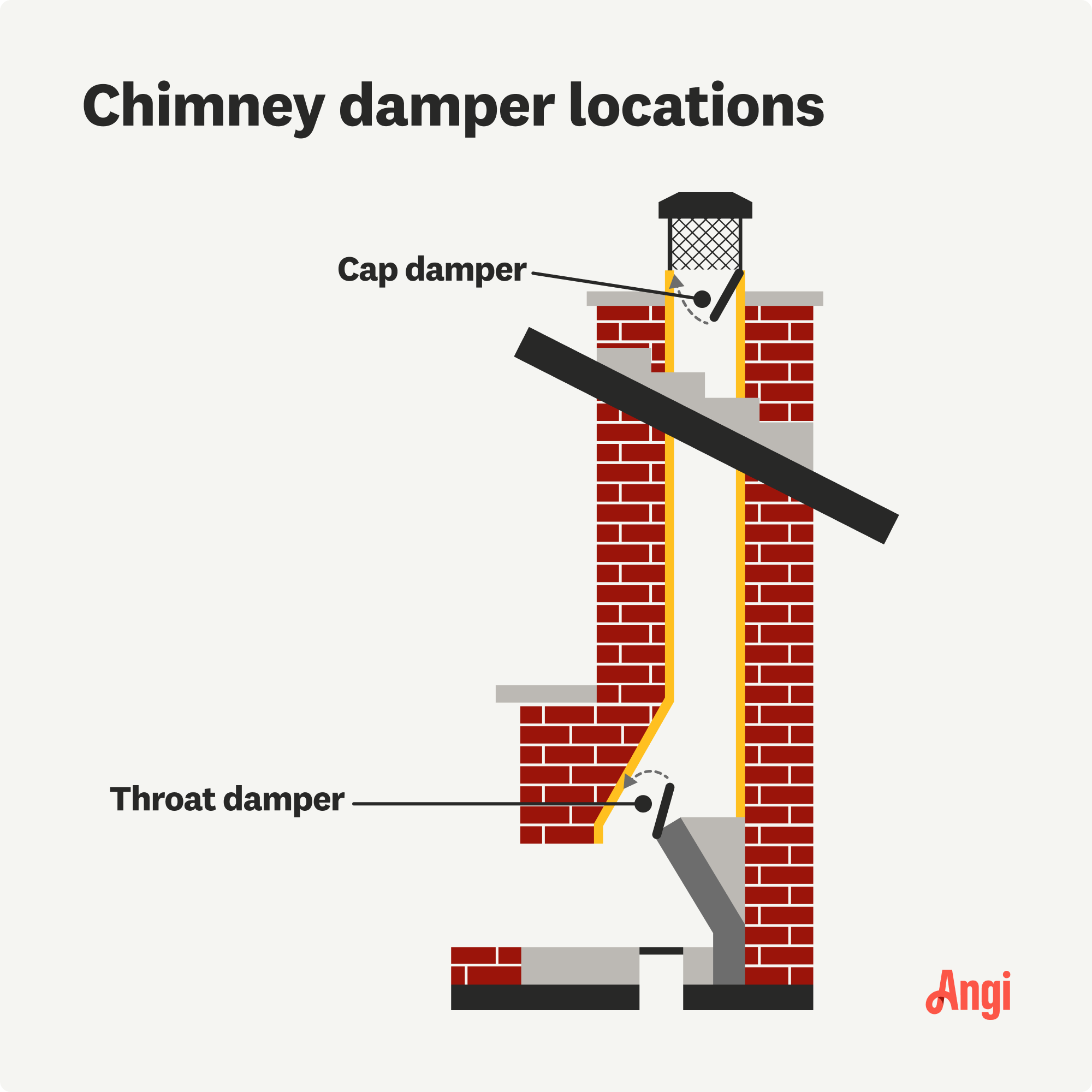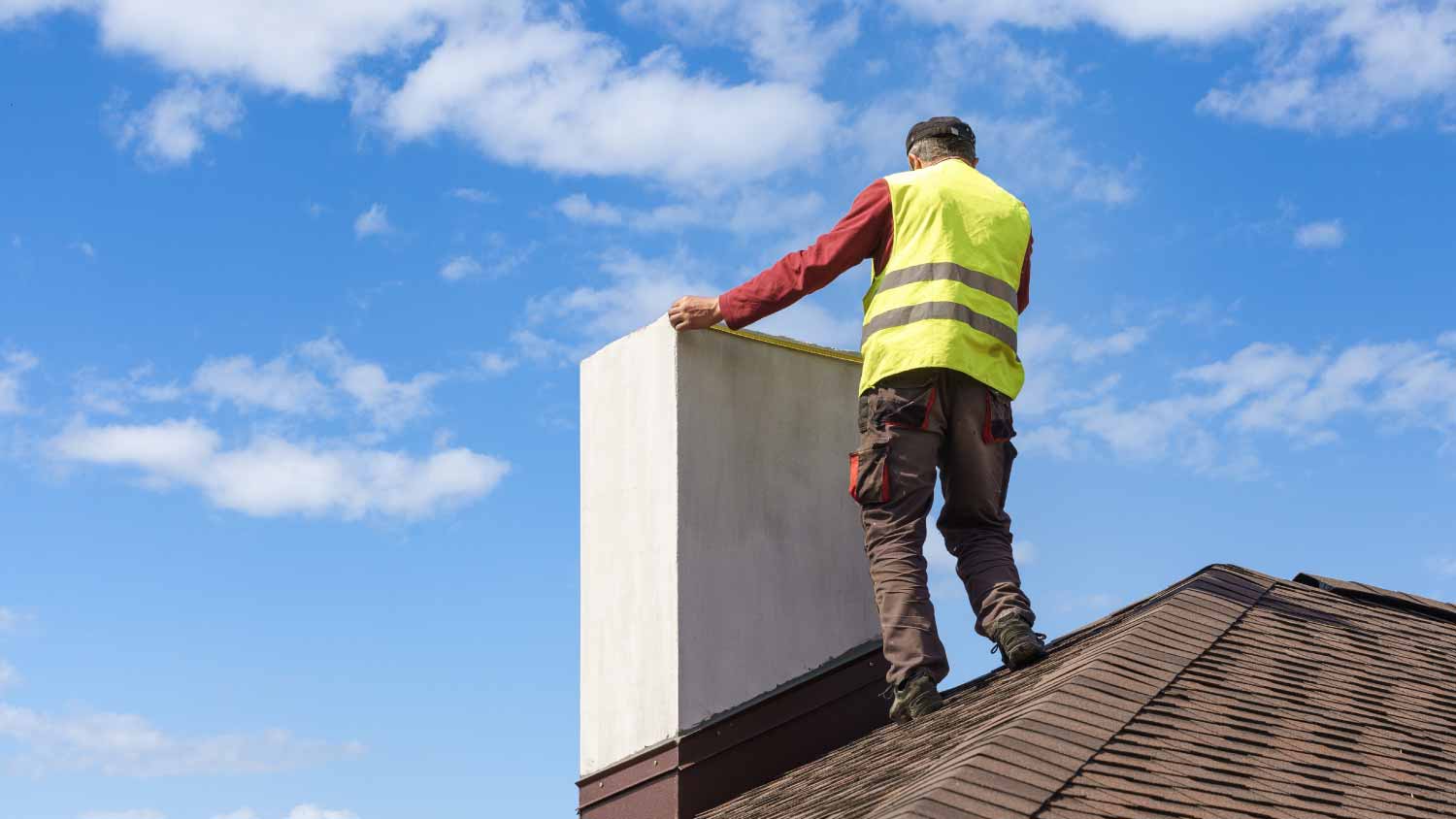
Discover the average chimney tuckpointing cost, key price factors, and expert tips to help you budget and save on your next chimney repair project.
Chimney dampers let air in or out


A chimney damper is a small contraption that lets air flow freely into your home when open and seals off your home when it’s closed.
There are two main types of chimney dampers: throat dampers and chimney cap dampers.
Chimney cap dampers offer better protection from debris and wildlife.
If you can’t easily open and close your chimney damper, it’s time to call a pro.
A chimney damper is a small but significant part of your chimney. It helps regulate how much air is coming into and going out of your house so that you can keep your fire roaring when you want to and your home sealed off when you’d prefer to run your air conditioning instead. Below, we explain what this little device is on your chimney, how to tell if it's working, and when it’s best to bring in professional help if it isn’t.

A chimney damper is a little flap of metal that blocks off or allows air and smoke to flow from the fire up through the chimney flue and out of your house. It allows you to vent out the air when your fireplace is burning and to close off your chimney from outside air when it’s not.
There are two common types of chimney dampers:
Throat dampers can be found just above your fireplace inside the chimney. These dampers are more common in older homes and are made of cast iron or steel so that they can withstand the heat of the fire.
Chimney cap dampers, as their name implies, are found at the top of the chimney. They’re superior to throat dampers as they prevent animals and debris from getting into your flue when it’s closed, and they can also keep warm air in your home more effectively than a throat damper can. These dampers can also be made of steel or cast iron, though some may be made of aluminum if they’re far enough away from your fireplace.
Before starting your fireplace, you’ll need to open the damper to let enough air in for the fire to start.

A damper is attached to a cord, level, or screw, essentially a way to open and close the damper when you’re ready to start a fire or put out one in your fireplace. If your damper is closed, you shouldn’t hear any wind coming through your chimney or feel any air.
You can also look up into the fireplace to see if the damper door is open or closed, though this may not always be possible. You should also try to listen to or feel for the wind to determine if the damper is open.
Because they are located very near your fireplace, chimney dampers are subjected to the heat of the fire and all its byproducts, including smoke, soot, and creosote if you burn wood in your fireplace. They are also exposed to external elements, like rain and snow, which can corrode the damper's metal.
Here are some common problems with chimney dampers:
Warping: Over time, the heat alone can warp the damper, which makes it more difficult to open and close properly.
Obstruction: The buildup of fireplace byproducts can cause blockages, making it hard to open and close the damper.
Rust: Many dampers are made of metal. Rain, snow, and any sort of moisture can cause the damper to rust, making it difficult to open.
Debris: Bad storms can send debris flying, which can get lodged in the damper. Or, an animal may decide to make a nest and clog the damper.
Improper installation or removal: Sometimes, the damper itself is in good working condition, but there may be gaps around it, causing air leaks. If your home had a previous owner, it’s possible they removed the damper but never replaced it. A chimney repair pro can check if the damper is properly installed.
If you suspect that your chimney damper is damaged or obstructed, it’s time to call a chimney repair professional near you. This means if you find it difficult to open and close the damper when using the controls, if it feels like something is blocking you from using the controls fully, or if you can’t feel an air draft no matter if you’ve opened and closed the controls.
From average costs to expert advice, get all the answers you need to get your job done.

Discover the average chimney tuckpointing cost, key price factors, and expert tips to help you budget and save on your next chimney repair project.

Chimney repair costs can vary by the type of chimney you have and the required repairs. Use this guide to help you estimate project costs.

If you’re experiencing chimney airflow problems, a new damper may be in order. Use this guide to learn what goes into your chimney damper replacement cost.

If your chimney has structural damage, a partial or complete chimney rebuild is the only way to continue safely enjoying your fireplace.

Learn how to clear a blocked flue to decide if you have the skill and the gear to tackle the task or if it’s best left to the professionals.

Learn how to remove a chimney damper safely and decide whether to DIY or hire a pro for the job. Get tips on what to consider before starting.